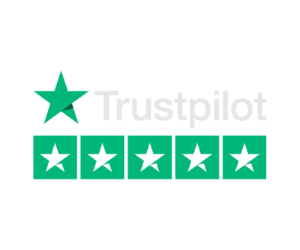Introduction: Creative Marketing Meets Automation
At Art Revo, we believe that creativity fuels growth. From branding and SEO to web design, videography, and social media, every touchpoint of your customer’s journey is an opportunity to inspire action. But while compelling visuals and memorable stories spark attention, the real transformation happens when brands automate their email marketing with powerful strategies.
For small businesses, the combination of email marketing and marketing automation has proven to be a game-changer. By building the right email workflows, leveraging platforms like Mailchimp, and learning how to personalize content, businesses are unlocking revenue streams that once felt out of reach.
In fact, through email automation campaigns that strategically engaged customers—from welcome emails to abandoned cart sequences—many of our clients have generated over $1M in sales, without bloated advertising budgets.
This guide is your roadmap. You’ll learn:
-
What email marketing automation really is, and how it helps brands flourish.
-
How to set up automation workflows that nurture your customer journey.
-
The best email automation tools (including free email marketing options).
-
Real automation examples that generated millions in revenue.
-
The benefits of email automation, and how to scale it with creative strategy.
Let’s dive in and show you how to automate your email marketing—the Art Revo way.
What Is Email Marketing Automation?
At its core, email marketing automation is the process of using an automation platform to send the right email campaign at the right time, triggered by specific actions your audience takes.
Instead of blasting one generic email send, you create automated workflows—a sequence of automated emails that adapt to your customer journey.
For example:
-
A customer signs up for your newsletter → they receive a welcome email with a discount code.
-
Someone leaves items in their cart → they get an abandoned cart email campaign nudging them to complete their purchase.
-
A loyal customer makes a repeat purchase → you personalize a thank-you series with product recommendations.
This isn’t just about convenience. Email automation helps small businesses automate marketing tasks, free up time, and focus on creativity.
With the right automation tools, you can scale personalized communication while still delivering the artistry and branding that makes your business unique.
Why Small Businesses Can’t Ignore Automation
When small businesses embrace marketing automation software, they unlock benefits that directly impact growth and sales.
1. The Benefits of Email Automation
-
Consistency: Stay connected with customers without manually sending every email.
-
Personalization: Use dynamic content and automation triggers to send highly relevant messages.
-
Efficiency: Automate repetitive marketing tasks so your team can focus on creative strategy.
-
Scalability: Whether you’re sending 100 or 100,000 email sends, automation ensures your message lands at the right time.
-
Revenue Growth: Well-timed marketing campaigns can significantly increase conversions.
2. Automation Helps Tell Your Brand Story
Creative storytelling is at the heart of Art Revo’s philosophy. With email marketing and automation, small businesses can extend their branding efforts directly into inboxes with stunning email templates, dynamic visuals, and personalized workflows.
Automation doesn’t replace creativity—it enhances it.
$1M+ Case Study: How Email Marketing Automation Delivers
One of our client success stories illustrates the power of email marketing automation.
The Challenge: A boutique e-commerce brand was struggling with low repeat purchases and abandoned carts. They had beautiful branding but no automation workflows in place.
The Solution: Art Revo implemented:
-
A welcome email series for new subscribers.
-
Abandoned cart automations triggered after 2 hours, 12 hours, and 24 hours.
-
A transactional email template upgrade with better branding.
-
A re-engagement workflow for inactive subscribers.
The Results:
-
Within six months, revenue grew by $350K.
-
By year-end, the brand surpassed $1M in sales directly attributed to email marketing automation.
-
Customer loyalty increased, with a higher email open rate and improved email deliverability.
This is the power of combining advanced features like automation with creative storytelling.
More Real-World Automation Examples Across Industries
While e-commerce gets much of the spotlight, automation workflows transform businesses across industries:
Hospitality
A boutique hotel uses automated workflows for welcome emails, upsells for spa packages, and post-stay surveys. Result: higher repeat bookings.
Real Estate
Agents use email automation tools to send personalized listings when a client clicks on a property. Automation examples like follow-up sequences nurture buyers until they’re ready to make a decision.
Creative Services
Photographers and videographers use email marketing platforms to automate consultations, send transactional emails (contracts, invoices), and personalize thank-you messages post-project.
B2B Consulting
Consultants deploy drip campaigns with dynamic content. Example: A lead downloads a whitepaper, triggering an automated email series with case studies, ending in a call-to-action for a discovery call.
The versatility of marketing automation platforms proves one thing: whether you’re selling a product, service, or creative vision, automation helps scale the human touch.
Best Email Automation Tools for Small Businesses
Not all automation platforms are created equal. To find the best email automation solution, consider:
-
Ease of use: Does the platform offer an intuitive campaign builder and email editor?
-
Automation features: Does it include automation triggers, pre-built workflows, and automation examples?
-
Pricing: Is there a free plan or free trial for small businesses?
-
Integrations: Can it connect with your landing page, SMS, or ecommerce automation systems?
Popular Tools:
-
Mailchimp – One of the most popular email marketing services, offering a free email marketing plan, automation workflows, and a user-friendly email marketing platform.
-
HubSpot – An all-in-one marketing and sales solution with robust marketing automation software features.
-
ActiveCampaign – Known for advanced marketing automation features and dynamic content personalization.
-
Klaviyo – Great for e-commerce with powerful abandoned cart automations and transactional email support.
-
MailerLite – An affordable email marketing tool with a generous free plan for startups.
If you’re looking to find the best, start by testing free email marketing plans before committing to a paid subscription.
A Beginner’s Guide: How to Automate Your Email Marketing
Small businesses often ask us: Where do I start? Here’s a detailed beginner’s guide to building your first email marketing automation workflow.
Step 1: Choose an Automation Platform
Select an email marketing software or marketing automation tool. Start with platforms like Mailchimp for its free plan and intuitive automation workflows.
Step 2: Define Your Goals
Do you want more sales? Higher engagement? Improved retention? This will shape your marketing campaigns and automation triggers.
Step 3: Map the Customer Journey
Outline each type of email your customers should receive, from transactional emails to welcome series.
Step 4: Build Automated Workflows
Use a campaign builder to create sequences of automated emails based on specific triggers. Include features like dynamic content for personalization.
Step 5: Segment and Personalize
Divide your audience into segments based on behavior, demographics, or purchase history. Add dynamic content blocks so emails feel individually tailored.
Step 6: Test, Measure, Optimize
Check email opens, click-through rates, and conversions. Refine your workflows using advanced features like A/B testing.
Best Practices for Email Marketing and Automation
To maximize your marketing efforts, follow these best practices:
-
Personalize email content: Address subscribers by name and use dynamic content to tailor offers.
-
Use pre-built workflows: Many automation services include templates for common scenarios like abandoned cart recovery.
-
Segment your email list: Group subscribers by interests, location, or behavior.
-
Monitor email deliverability: Ensure your email sender reputation remains strong.
-
Combine with other marketing tools: Pair your email marketing platform with SMS, landing pages, and social media.
-
Automate beyond email: Try ecommerce automation or sync with CRM software for a full-funnel experience.
Advanced Marketing Automation Features
For small businesses ready to scale, consider these advanced features like AI-powered personalization and intuitive automation.
-
AI-powered content suggestions to improve subject lines.
-
Ecommerce automation to sync with your online store.
-
Automated workflows that span across SMS, email, and landing pages.
-
Management software integrations for marketing teams.
-
Transactional email optimization to improve trust and consistency.
With the right marketing automation platform, your business can compete with larger enterprises while staying creative and authentic.
The Future of Email Marketing Automation
The next wave of marketing automation tools will reshape how small businesses grow:
-
AI-powered predictions: Automation could forecast when a subscriber is most likely to purchase.
-
Omnichannel integration: Expect tighter links between email marketing services, SMS, chatbots, and social ads.
-
Voice-triggered automation: Imagine workflows triggered by a customer using Alexa or Google Assistant.
-
Hyper-personalization: Advanced features like dynamic content will evolve into fully AI-powered storytelling at scale.
-
No-code campaign builders: Ease of use will be central, letting even beginners build powerful marketing automation sequences.
For small businesses, this means an even greater opportunity to compete with big brands—if they adopt early.
Creative Uses of Email Automation for Branding
At Art Revo, we see email marketing automation not just as a sales tool but as a canvas for creativity. Here’s how we help small businesses use automation to strengthen brand identity:
-
Branded templates: Consistent typography, colors, and visuals aligned with your website and social media.
-
Story-driven sequences: Turning a welcome email series into a mini storytelling campaign.
-
Video in email: Embedding videography content into email templates for richer engagement.
-
Interactive elements: Using dynamic content like polls or GIFs to make automation fun.
This is where creativity meets powerful marketing automation.
Conclusion: Creativity + Automation = Business Growth
The journey to $1M+ in sales doesn’t require huge ad spends—it requires smart strategy and the right automation tools.
By embracing email marketing automation, small businesses can automate repetitive marketing tasks, improve personalization, and deliver creative branded experiences at scale.
At Art Revo, we combine artistry with technology—branding, SEO, social media, videography, and web design—to help businesses not only look great but also automate their email marketing for real results.
If you’re ready to elevate your brand and revenue, reach out to Art Revo today. Together, we’ll design automation that feels human, creative, and profitable.
FAQs
1. What is the best email automation tool for small businesses?
The best email automation tool depends on your needs. Platforms like Mailchimp (great for beginners), ActiveCampaign (advanced personalization), and HubSpot (all-in-one) are popular. Test a free trial or free plan to find the best fit.
2. Can I use free email marketing services to start?
Yes! Many platforms offer free email marketing plans with essential automation features. For example, Mailchimp provides a free plan that includes pre-built workflows like a welcome email.
3. How does email automation help my business?
Email automation helps save time, improve engagement, and increase revenue. With automation triggers like sign-ups or purchases, you can send timely and personalized emails that guide the customer journey.
4. What types of email campaigns should I automate first?
Start with automation examples like welcome emails, abandoned cart reminders, and post-purchase follow-ups. These workflows typically deliver the highest ROI.
5. How do I personalize automated emails?
Use dynamic content, segmentation, and automation features like conditional logic. This ensures every subscriber feels your brand understands their needs.
6. What is the difference between email marketing and marketing automation?
Email marketing is sending campaigns manually or in bulk, while marketing automation is creating smart, automated workflows that adapt based on customer actions.
7. Can email automation work for non-ecommerce businesses?
Absolutely. Service providers, coaches, and B2B companies can use automated emails for nurturing leads, onboarding clients, or delivering educational content.
8. How do I know if my automation workflows are effective?
Track KPIs like email opens, click-through rates, conversions, and revenue per email. Use automation features like A/B testing to refine results.
9. What is an automation trigger?
An automation trigger is an action—such as signing up, making a purchase, or abandoning a cart—that starts a specific workflow.
10. Can I combine email with SMS in automation?
Yes. Many marketing automation platforms allow SMS + email workflows to reach customers on multiple channels.



